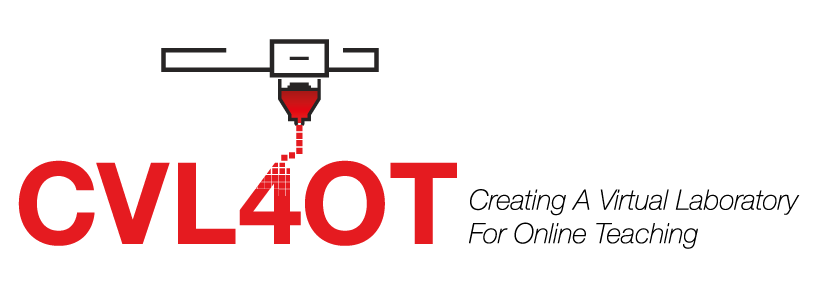We are inviting you to join Creating a Virtual Laboratory for Online Teaching (CVL4OT) project Online Training Programme
Join Europe’s first dedicated training programme for biomaterials students to experience multinational online training and reach the 3D robotic bioprinter laboratory provided with distance learning.
Between November 2023 and January 2024 (Online)
Registration is open until 29th of October 2023
Biomaterials and Tissue Engineering Online Training Programme

Deadline application October 29th, 2023
Apply to the Program https://www.surveymonkey.com/r/2W2NSZT
About the programme
Biomaterials and Tissue Engineering Course is an online teaching program for curious minds to learn about current trends in biotechnology and have opportunities to try a robot-armed 3D printer with their computer wherever they want to.
Biomaterials and Tissue Engineering Online Training is a 8th weeks program organised by expert academics from Spain, Romania, France and Turkey
The online programme combines international online training modules, online laboratory, innovative remote-controlled experimental studies and Biomaterials course book.

Deadline application February 24 th, 2023
Access to Europe’s leading experts and content on the Biomaterials field.
Accelerate your digitalization development through doing an experiment in an online laboratory.
Discover new tools and methods in the Biomaterials field.
Engage with international academicians and connect with them through the training.
At the end of the Program, you will be awarded a training certificate.
Free of charge, participants do not pay tuition.
Programme Curriculum
MODULE 1
Introduction of Biomaterials and
Tissue Engineering
Materials
Design and Fabrication
Biomimetic
Biomaterials in Tissue Engineering
MODULE 2
Tissue Regeneration Processing
and Mimicking
Tissue Regeneration
ECM structure and properties
Scaffold design
Tissue products
MODULE 5
History of Nanotechnology
Properties of nanotechnology
Methodologies
Applications
MODULE 7
Drug Delivery
for Tissue Engineering
Mechanism of drug delivery system (DDS)
Types of DDS
Design of DDS
Examples of DDS
MODULE 8
Cell-Material
Interaction
Types of cell interaction
Mechanism of cytoskeleton
Properties of cell interaction
Immunological response
MODULE 10
Scaffolds
Fabrication Processes
Basic fabrication process
Scaffold design
Techniques of fabrication
Advanced fabrications
MODULE 11
Physicochemical
Characterization of Scaffolds
Physico-chemical properties
Sol-gel transition mechanisms
Biopolymer hydrogels
Bioprinting applications
MODULE 13
Additive
Manufacturing
Introduction to additive manufacturing
Design of a workflow for 3D printing
Various of 3D printing methods
Example of 3D printers
MODULE 14
History of Bioprinting
Types of Bioprinters
Bioinks
Example of 3D bioprinted tissues
MODULE 15
Using of 3D bioprinter
Distance learning
Learning through experience
New learning method



“The information and views set out in this web-site are those of the authors and do not necessarily reflect the official opinion of the European Union. Neither the European Union institutions and bodies nor any person acting on their behalf may be held responsible for the use which may be made of the information contained therein.”
